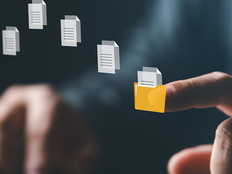Telework Can Open Up Cybersecurity Risks
For agencies ahead of the curve, adjusting to the new normal may have been more seamless. However, widespread telework exposes a new set of security risks for everyone.
- Ransomware attacks have been on the rise over the past few years — and in the current climate, the Federal government’s mission is more critical than ever, making agencies prime targets for malicious actors.
- With workers at home, the use of videoconferencing platforms has expanded exponentially, prompting warnings from the FBI and agencies to limit their use.
- The rapid expansion of telework left many workers unprepared, forcing agencies to loosen restrictions around the use of personal devices, unveiling a new set of security concerns for Federal IT and security professionals.
- Many VPNs are not built for this scale of remote work — causing slowdowns or limited access — and because they’re operating 24/7, it’s difficult to maintain the latest security updates and patches.
Already, IT teams are working in overdrive to ensure mission-critical work continues, making data protection features, such as backup and restore, more important than ever. Rapid-restore capabilities are crucial; data cannot be locked on a tape, in a warehouse, or on a slow, spinning disk. Often, agencies may never need to utilize these capabilities, but now is the time to leverage data protection broadly.
Along with an increased focus on security, agencies need the right infrastructure to support remote work capabilities. Basic connectivity is a priority for agencies — and a virtual desktop infrastructure offers simplified management, enhanced security, better performance and reduced costs.
Further, VDI enables agencies to become more agile, with the ability to address users who work both at home and in the workplace with wide-ranging compute requirements. New delivery capabilities allow agencies to completely centralize VDI management, creating a new security paradigm where nothing is stored at the endpoint.
READ MORE: Find out how to create a successful federal telework environment.
Telework Is Here to Stay
The future of telework is rapidly evolving, and once agencies have established the right infrastructure, the focus must shift to permanently supporting remote work while protecting against the increase in security threats. Success starts with the right foundation: a modern data experience.
A modern data experience is simple.
It should be application programming interface–defined, with easy, common management tools and proactive analytics that are actionable at scale. It should also be seamless. This experience can span any protocol, any tier of service level, and multiple clouds in a single environment.
Last, it should be sustainable, and the experience should be self-upgrading.










